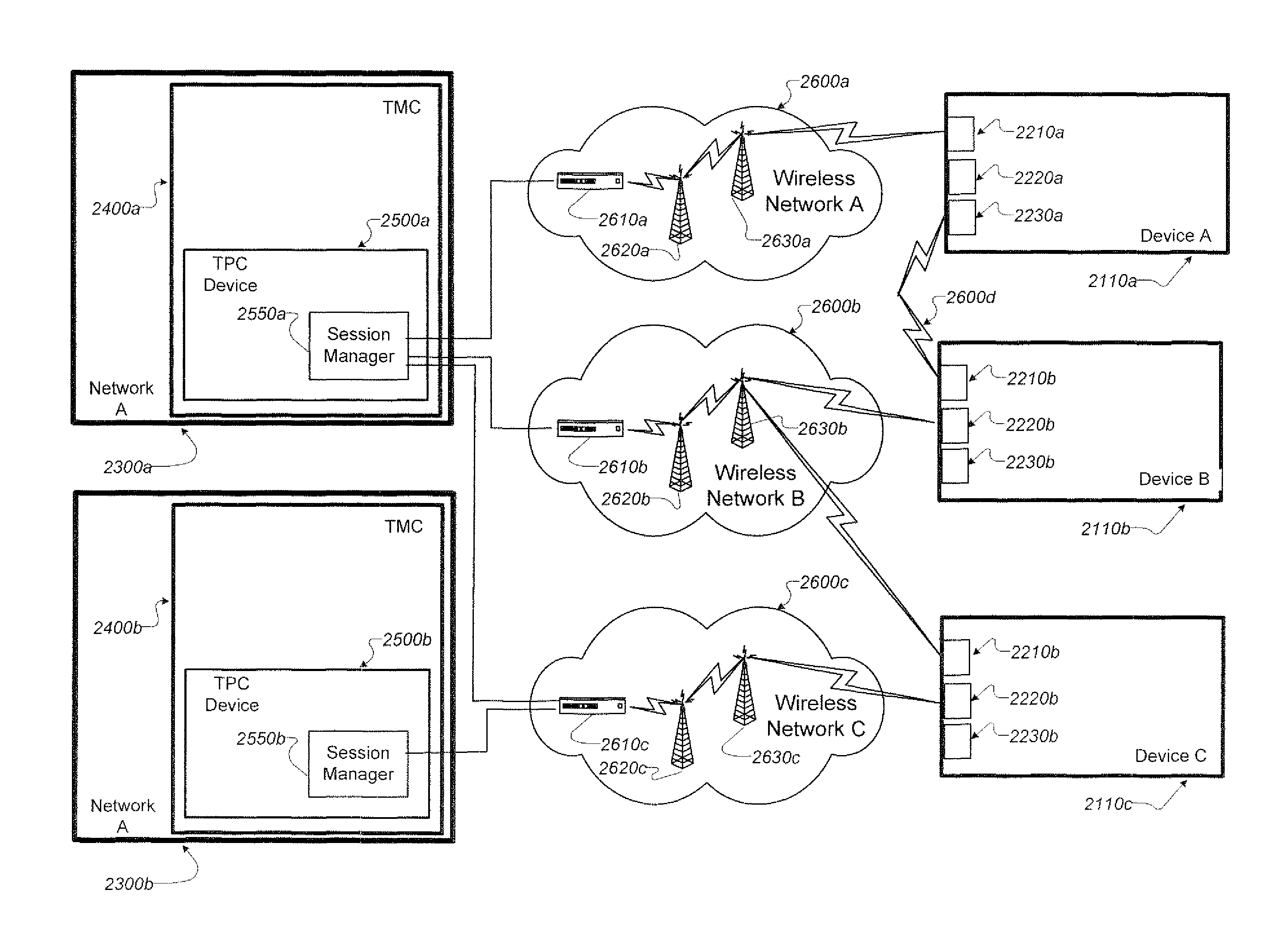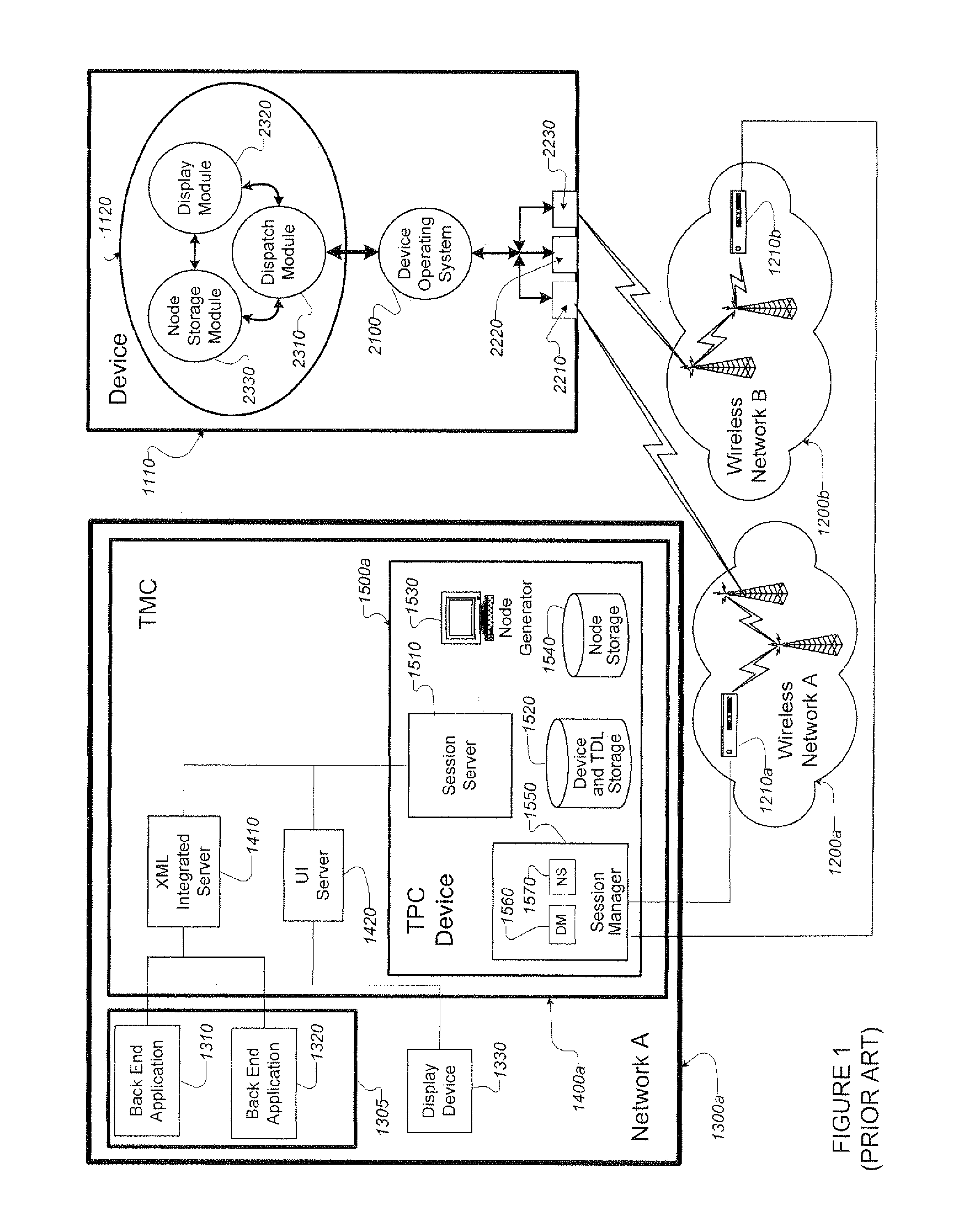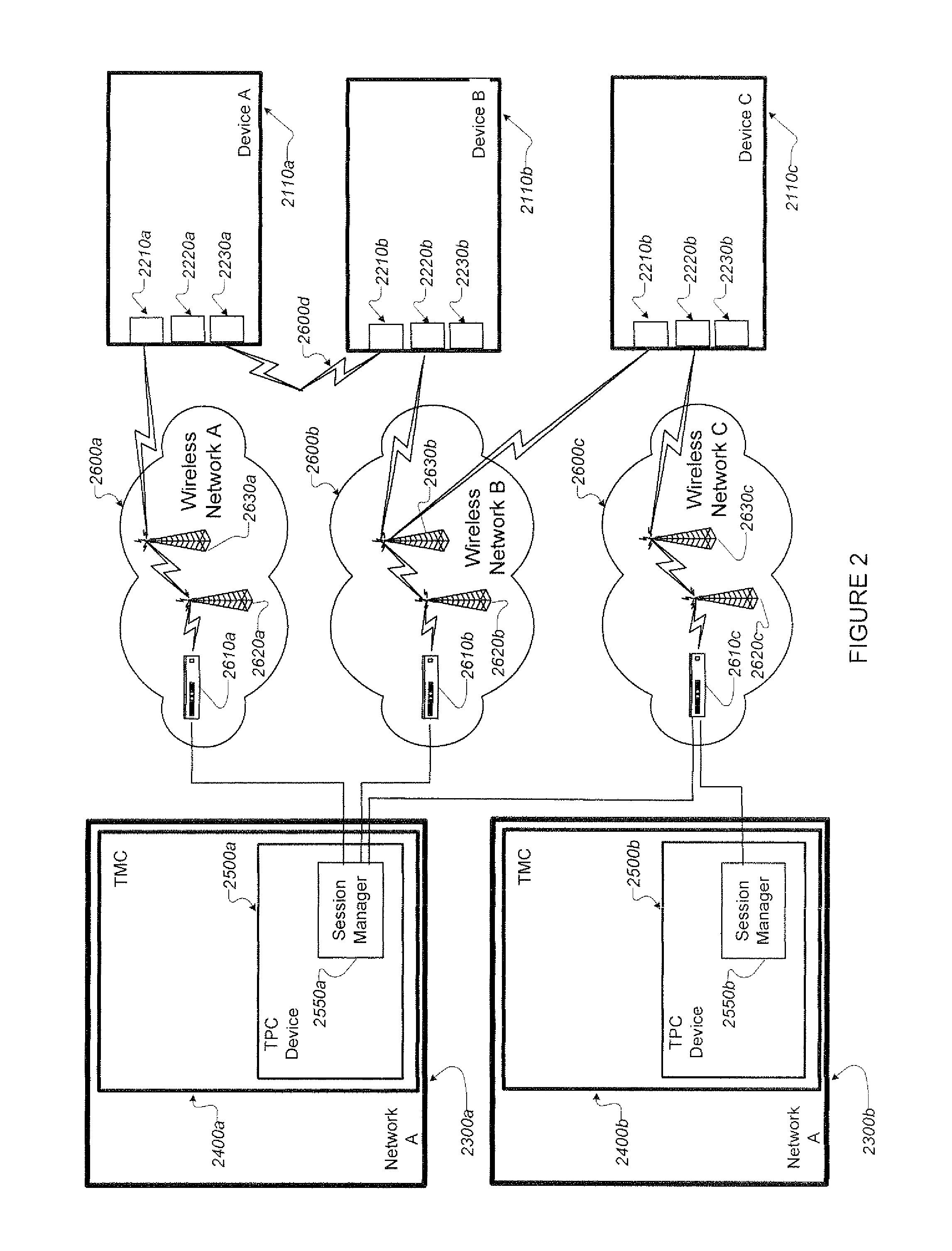System and method for dynamic automatic communication path selection, distributed device synchronization and task delegation
a dynamic automatic communication and task technology, applied in the field of system and method for dynamic automatic communication path selection, distributed device synchronization and task delegation, can solve the problems of not being able to optimize devices that support only a single communication interface, not being able to maintain constant contact with a point of presence, and not necessarily common optimizations, etc., to achieve the effect of limited bandwidth and limited bandwidth
- Summary
- Abstract
- Description
- Claims
- Application Information
AI Technical Summary
Benefits of technology
Problems solved by technology
Method used
Image
Examples
example security
Specifications
[0095]Exemplary implementations support a flexible and extensible security capability involving the use of “security specifications.” A security specification is an ordered arrangement of bytes, some of which have particular or limited ranges of values, which are associated with an entity, such as a data item, set of data items, device or server and is used to specify permissions and / or restrictions on access to, use or modification of, the associated entity.
[0096]Security specifications are associated with entities in various ways. With some entities, such as some data items (e.g. nodes), the security specification is embedded into the entity as a normal aspect of such entities. With other entities, such as communication paths, users, or devices / servers, the security specification is located separately from the entity and associated with it by name, ID, or other reference that permits the applicable security specification for the entity to be located or identified. Wh...
example communication
Methods
[0105]In addition to the Pull mode of operation supported by exemplary prior art devices, exemplary devices can support Push mode, Cooperative Push mode, Out of Band Transmission, and Communication Path Switching.
Peer-to-Peer Communication
[0106]As described previously, Peer-to-Peer (P2P) communications involve direct connection between two or more devices without a requirement for a server or other device to enable communications. A plurality of technologies exist that can support this mode of connection, such as Bluetooth, and Wi-Fi in “ad hoc” mode. In some embodiments, P2P is used to permit transmission of messages and message segments between devices without the need for any connection to a server, such as to permit a first device to send data items representing a unit of work to a second device. This is advantageous in many ways, such as for permitting a supervisor to re-assign a task to a subordinate, or for a worker to pass a task to a co-worker.
[0107]P2P communication...
example devices
[0153]FIG. 6 illustrates exemplary, non-limiting implementations of the communications portions of devices compatible with a communication system architecture such as the exemplary architecture presented in FIG. 1, in which a first device (6000) communicates with one or more other devices (6610, 6620), through a particular instance of a communication path (6710, 6720). Each such device includes one or more communication interfaces (6300a, 6300b), which are capable of accessing at least one of a set of available communication technologies. Exemplary devices further comprise a Dispatch Manager (6220), which in turn further comprises at least one Protocol Manager(s) (6210a, 6210b), at least one Session Manager (6200), and node store and cache (6500). The Protocol Managers are provided on the device to alter data item format and content as required by the implementation of the communication technologies used by the communications interfaces (6300a, 6300b). Device 6000 processes applicat...
PUM
 Login to View More
Login to View More Abstract
Description
Claims
Application Information
 Login to View More
Login to View More - R&D
- Intellectual Property
- Life Sciences
- Materials
- Tech Scout
- Unparalleled Data Quality
- Higher Quality Content
- 60% Fewer Hallucinations
Browse by: Latest US Patents, China's latest patents, Technical Efficacy Thesaurus, Application Domain, Technology Topic, Popular Technical Reports.
© 2025 PatSnap. All rights reserved.Legal|Privacy policy|Modern Slavery Act Transparency Statement|Sitemap|About US| Contact US: help@patsnap.com



